Abstract
OBJECTIVE: To provide guidance on improving the quality of case studies in health services research. DATA SOURCES: Secondary data, drawing from previous case study research. RESEARCH DESIGN: Guidance is provided to two audiences: potential case study investigators (eight items) and reviewers of case study proposals (four additional items). PRINCIPAL FINDINGS: The guidance demonstrates that many operational steps can be undertaken to improve the quality of case studies. These steps have been a hallmark of high-quality case studies in related fields but have not necessarily been practiced in health services research. CONCLUSIONS: Given higher-quality case studies, the case study method can become a valuable tool for health services research.
Full text
PDF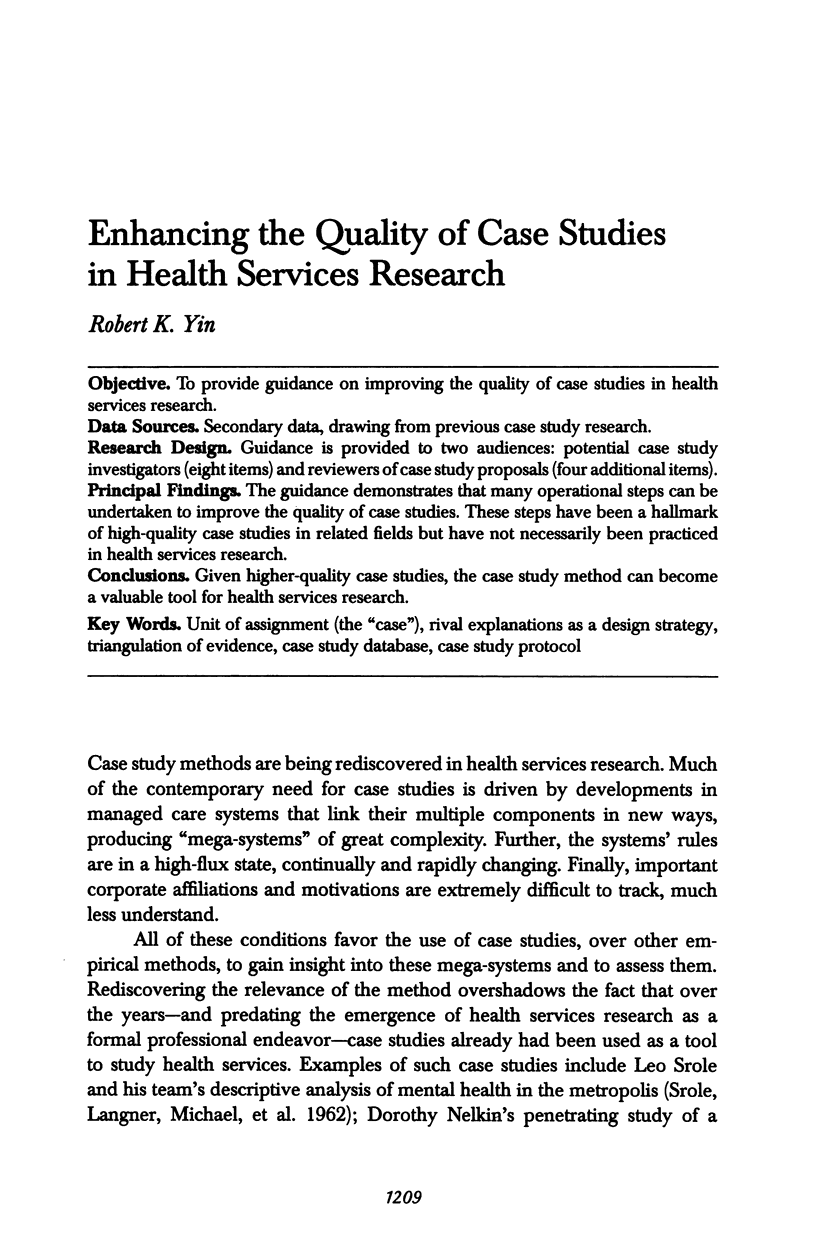
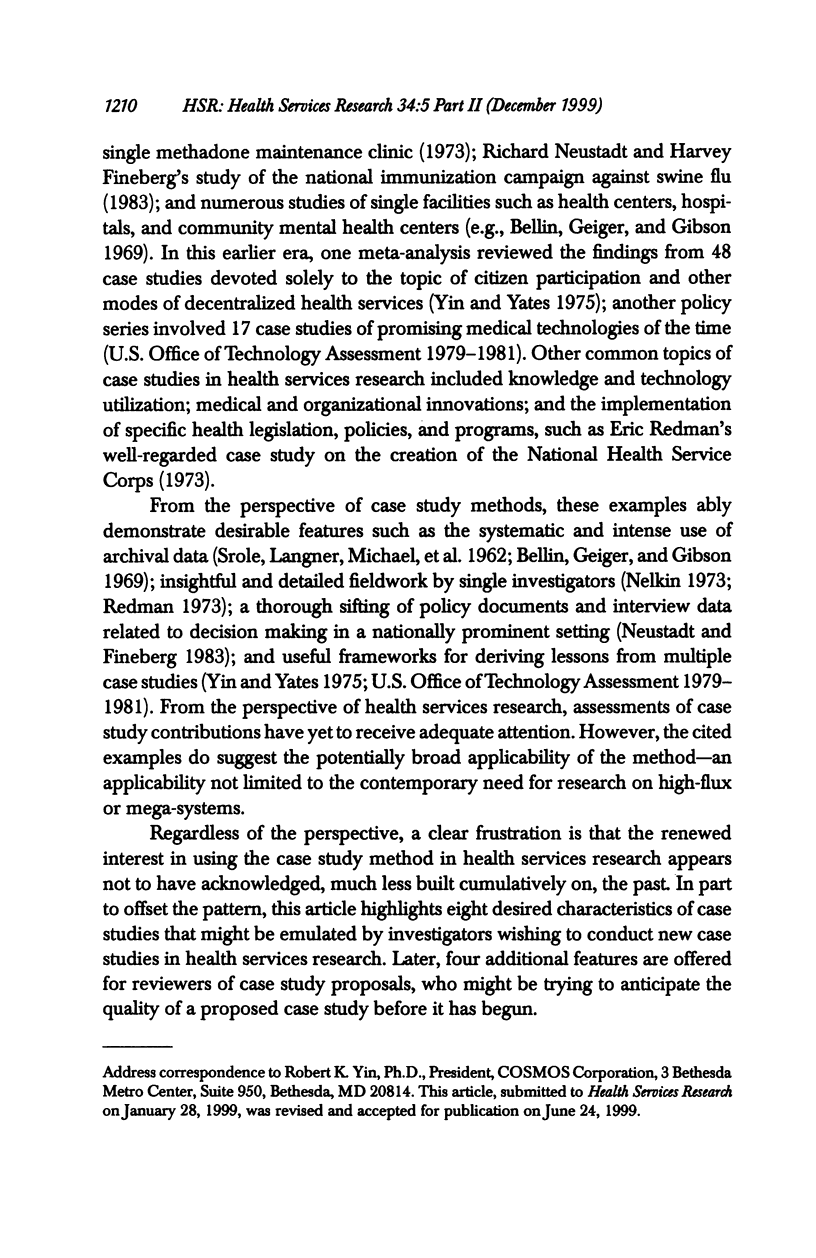
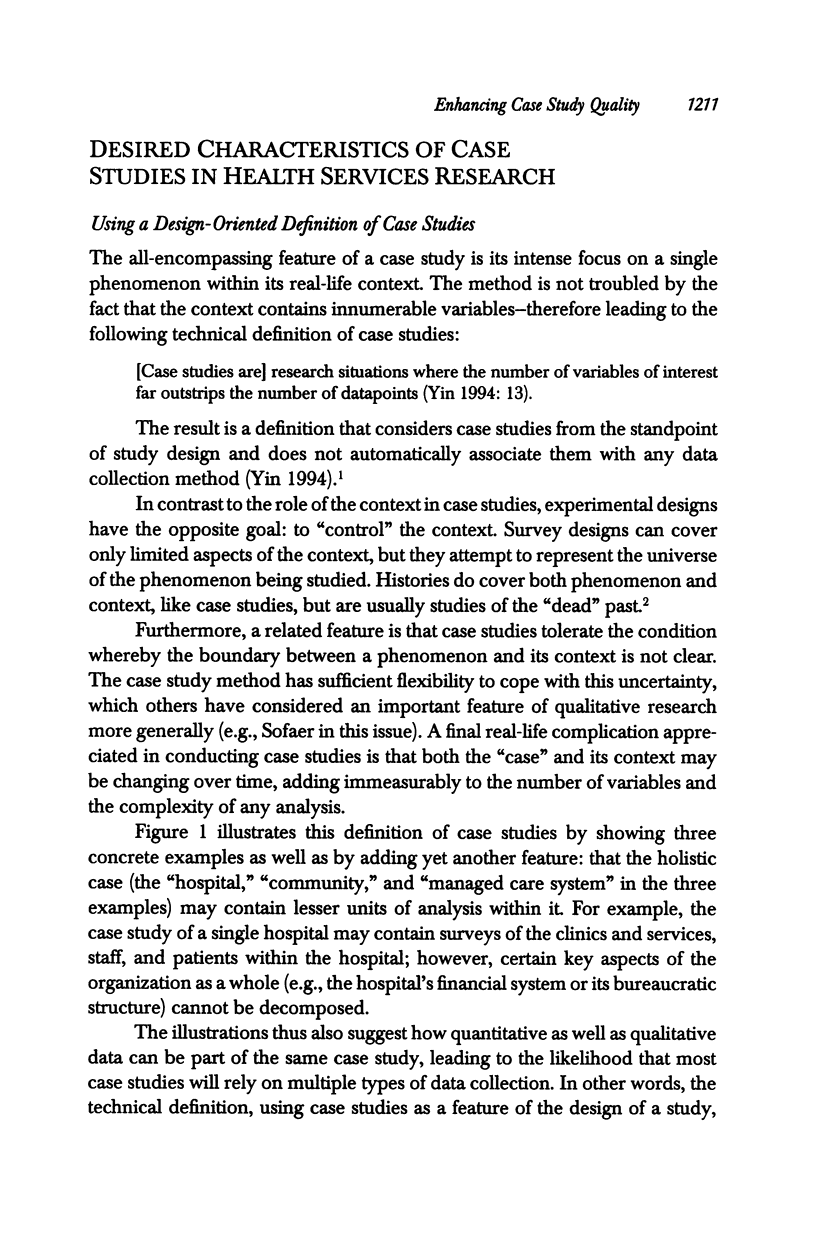
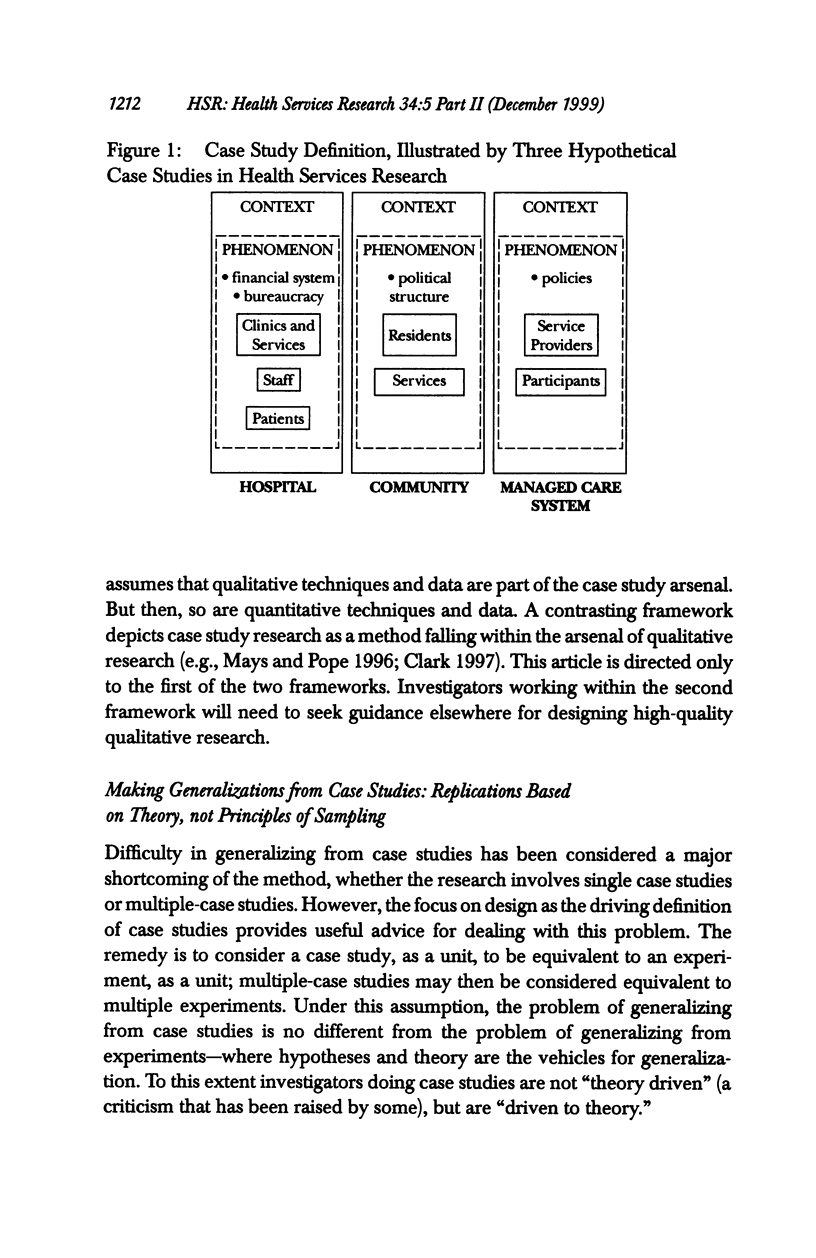
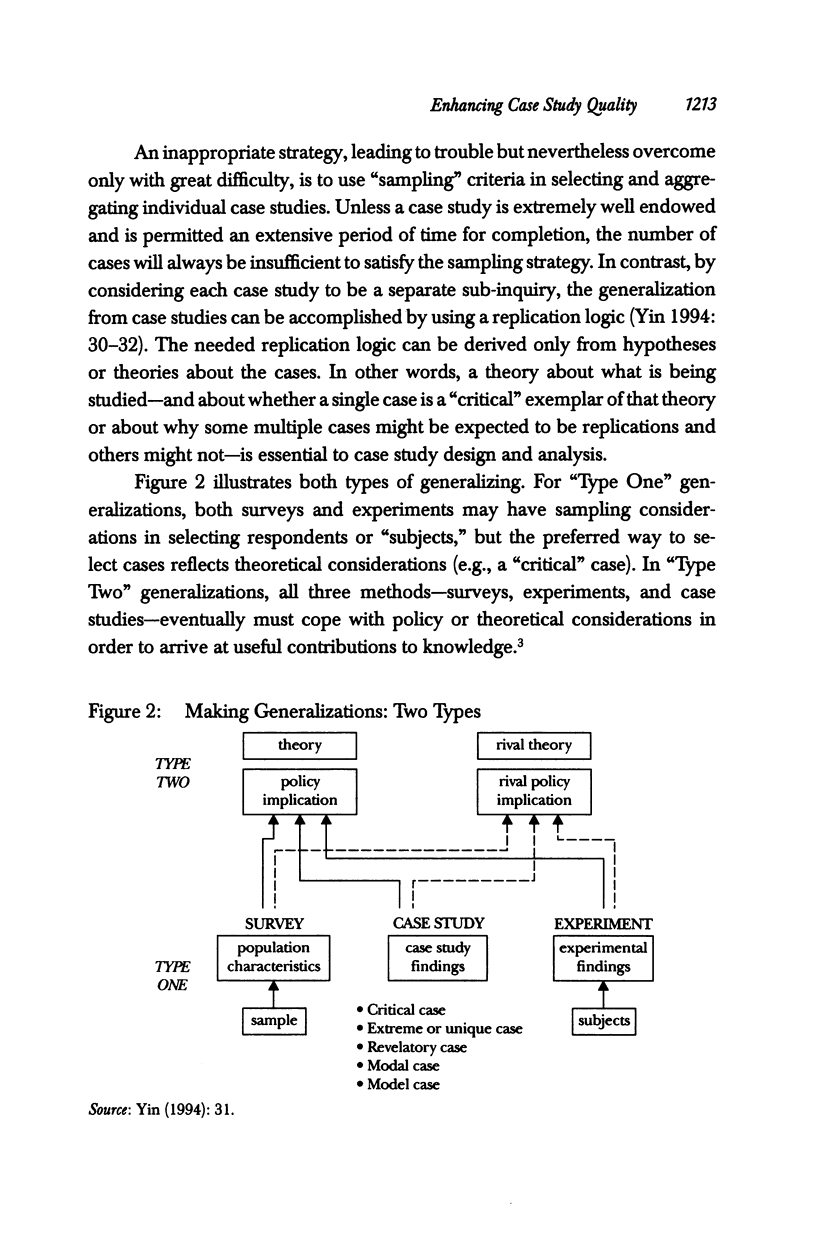
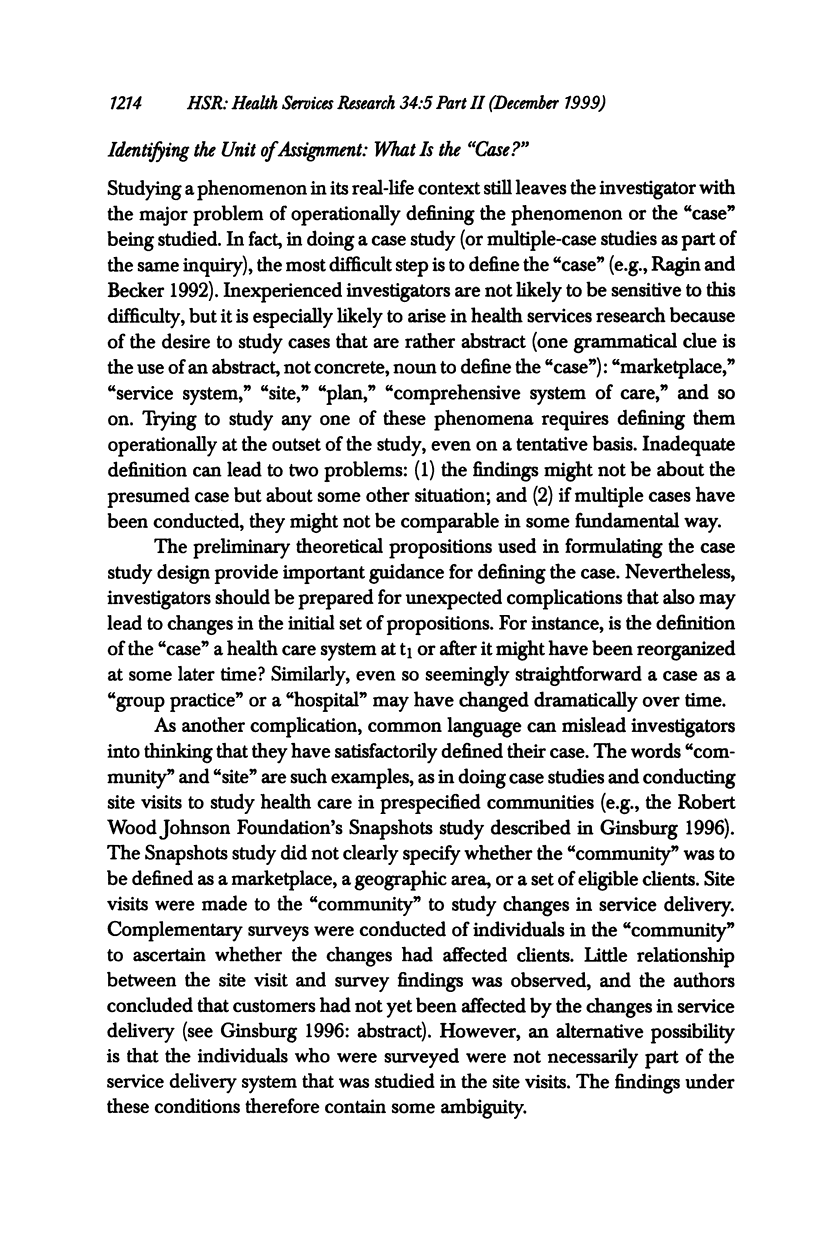
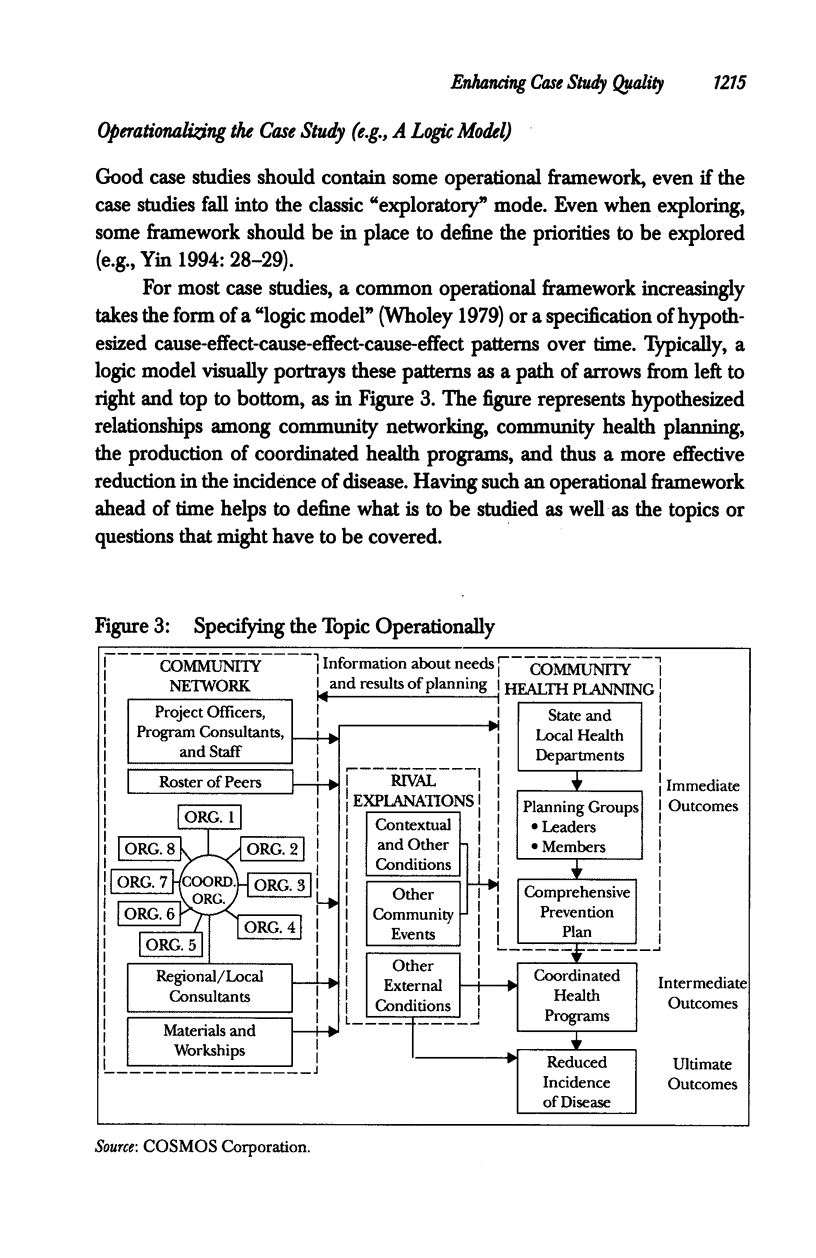
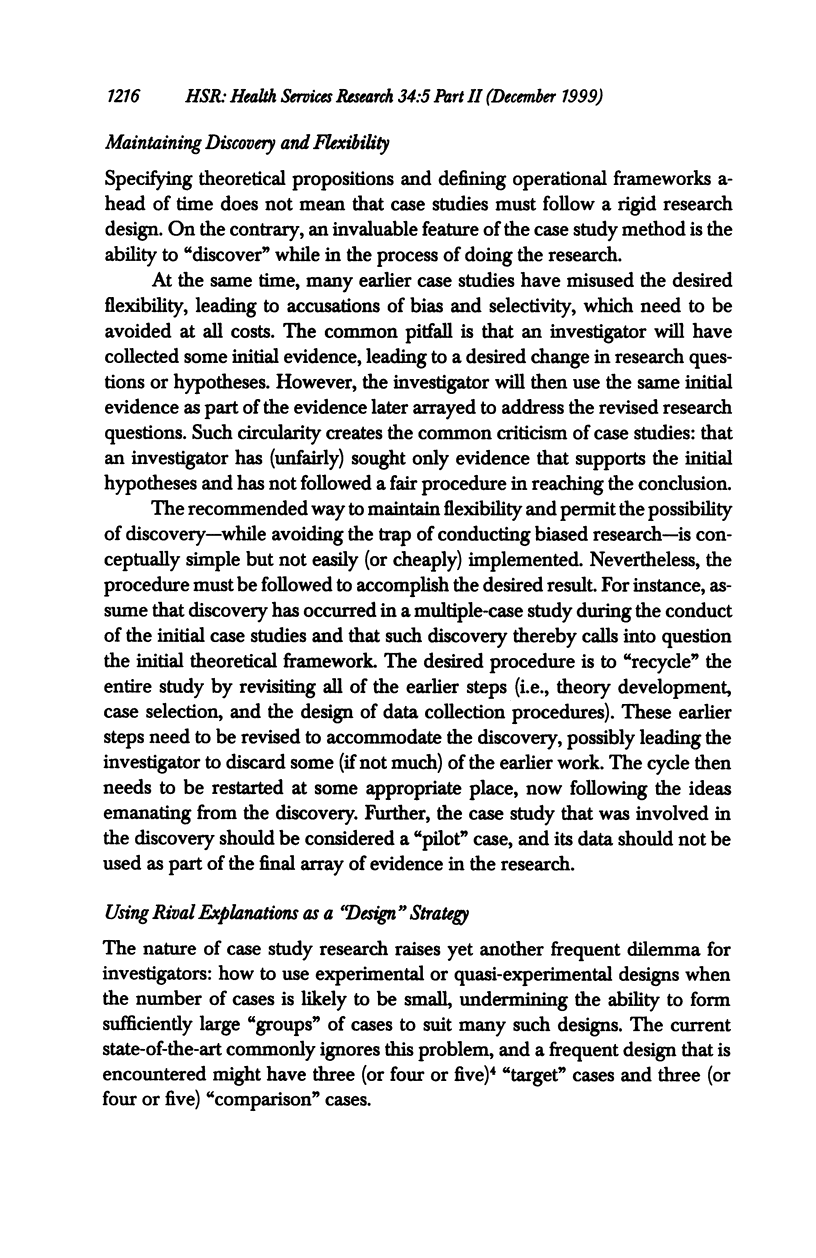
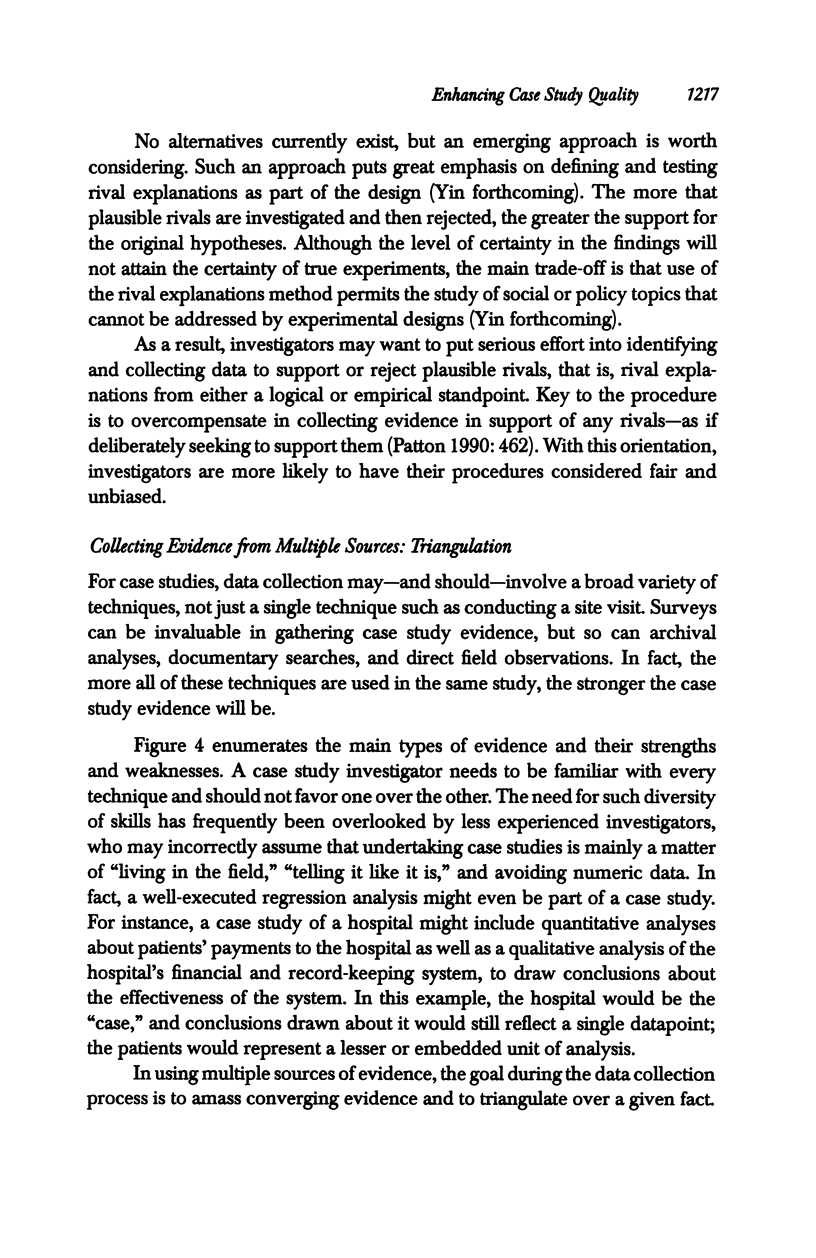
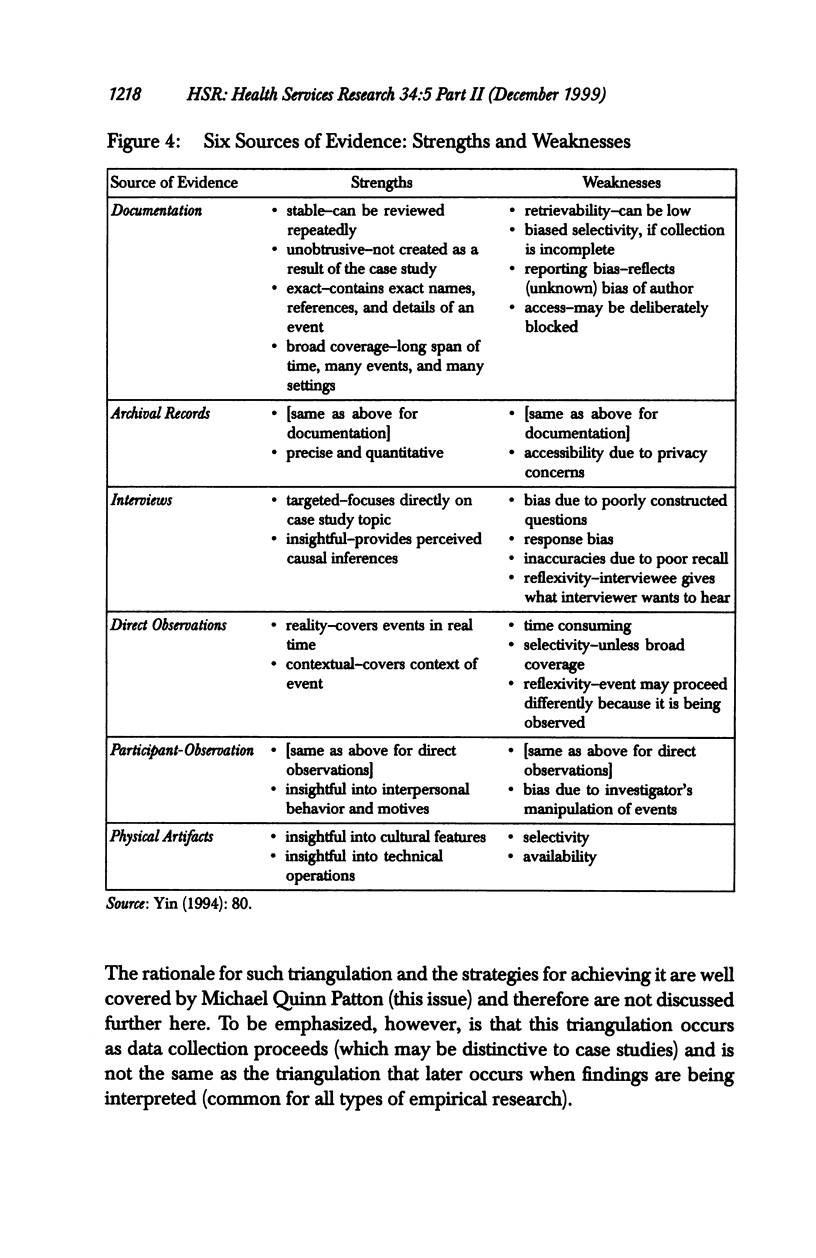
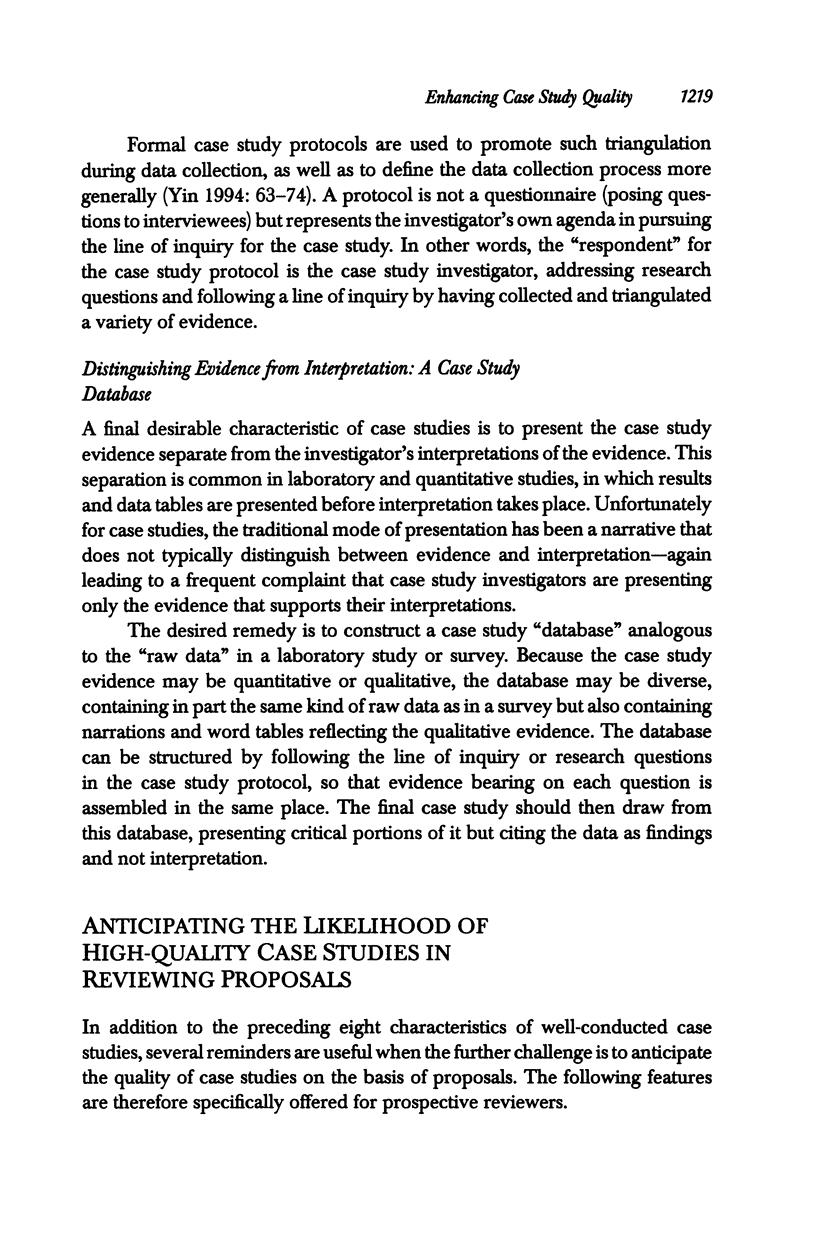
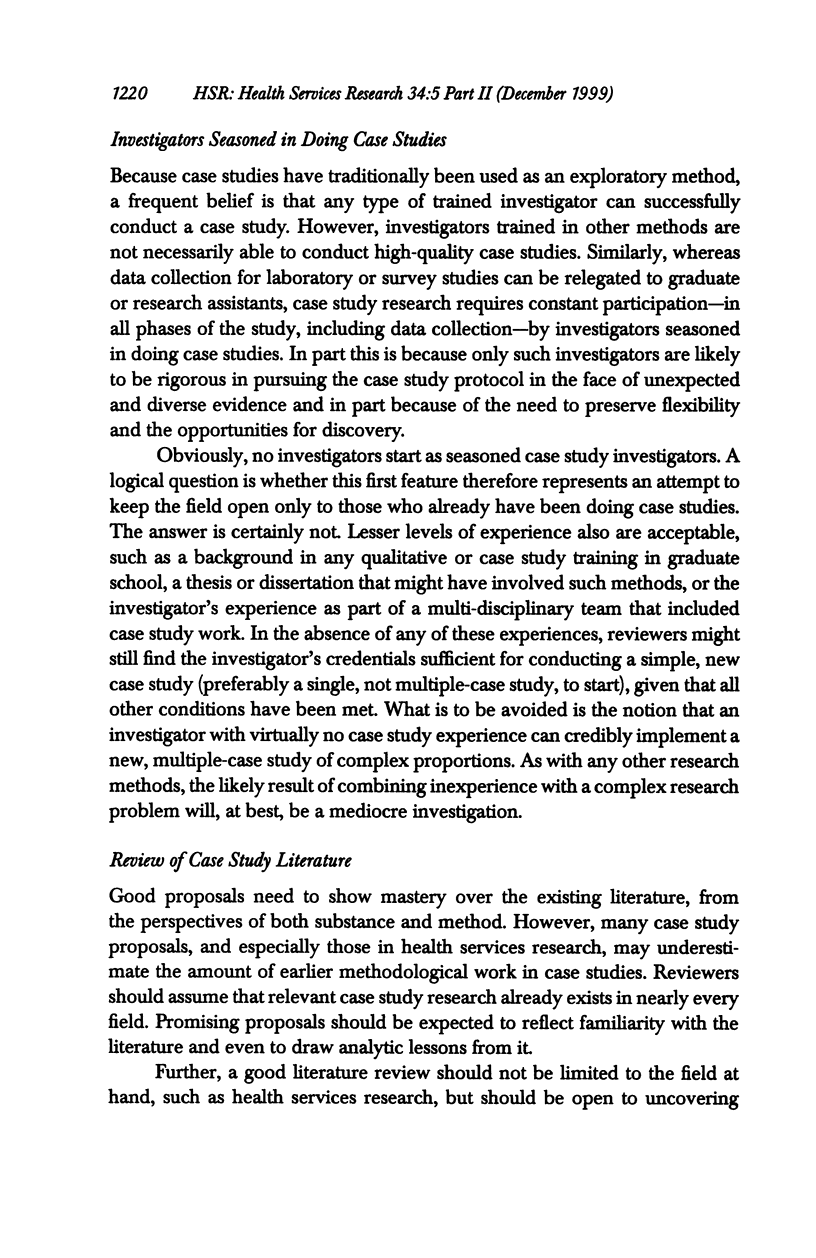
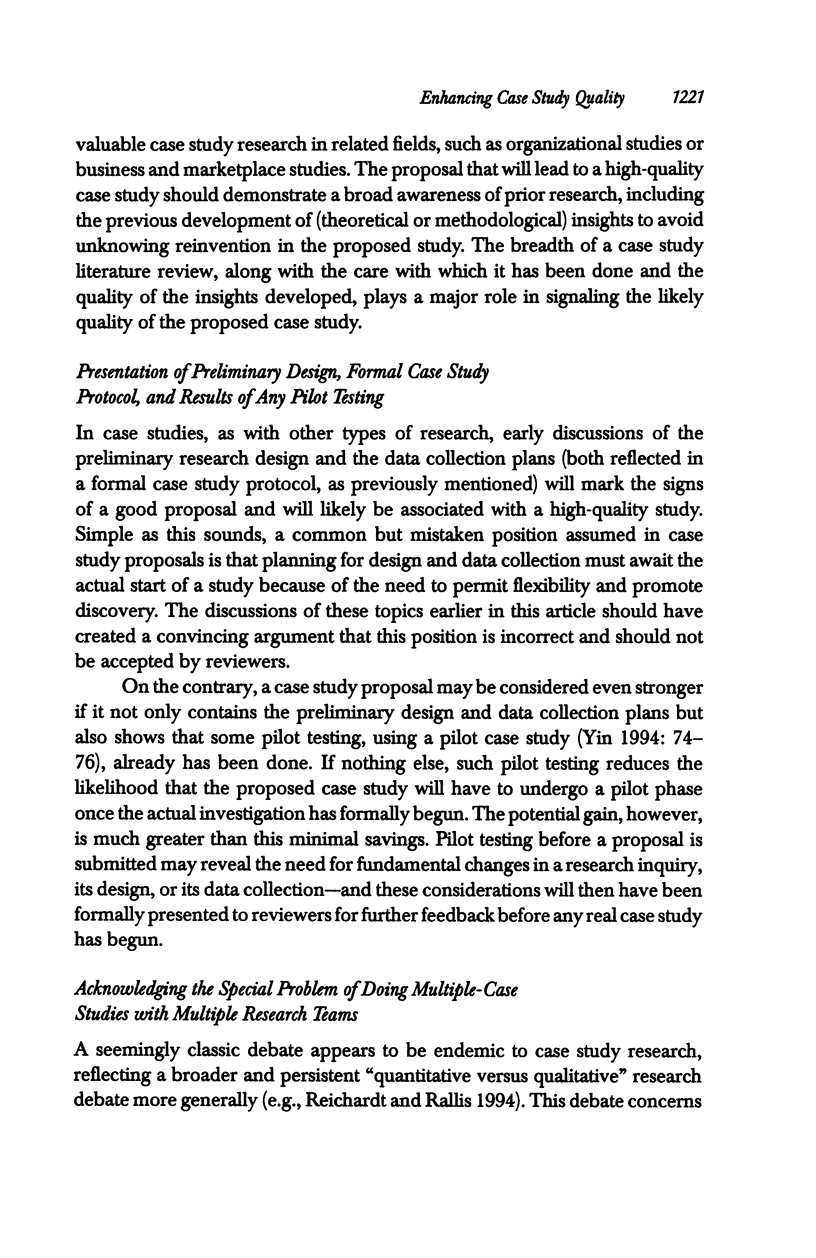
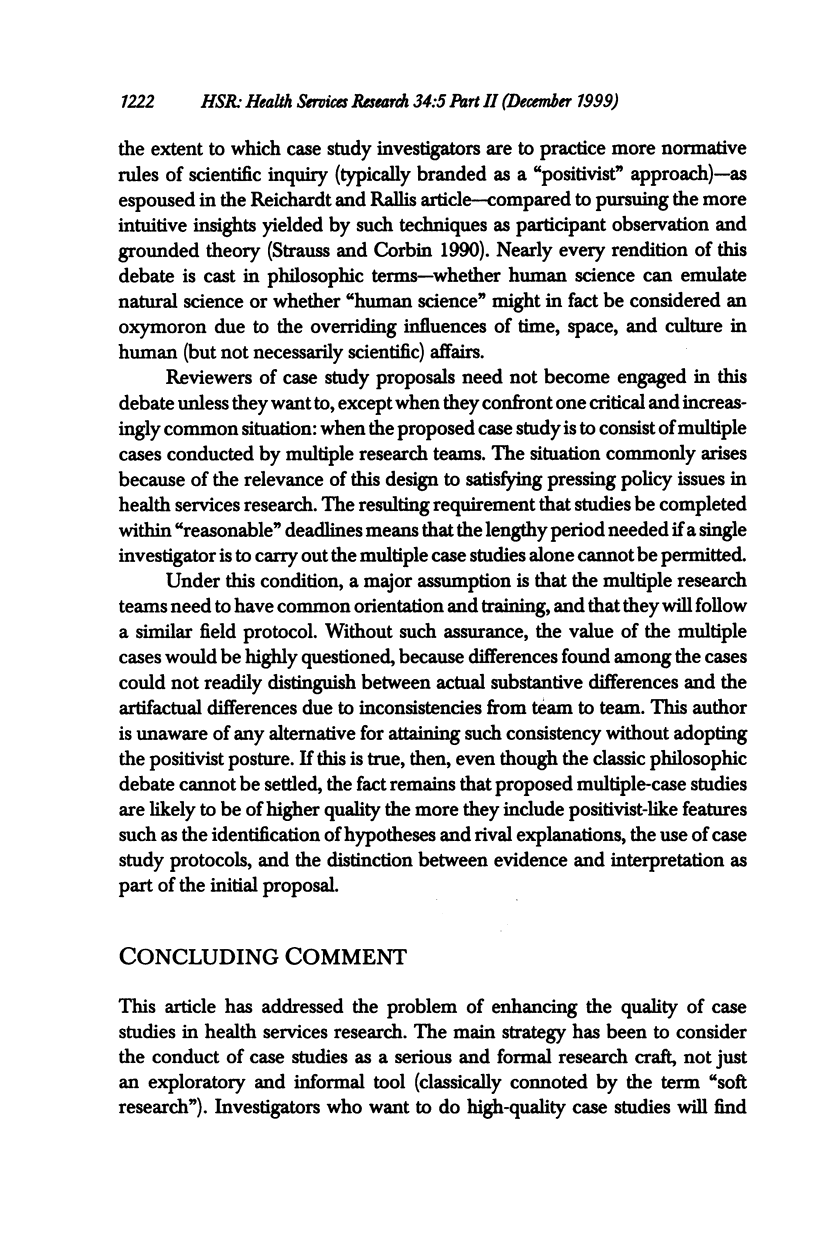
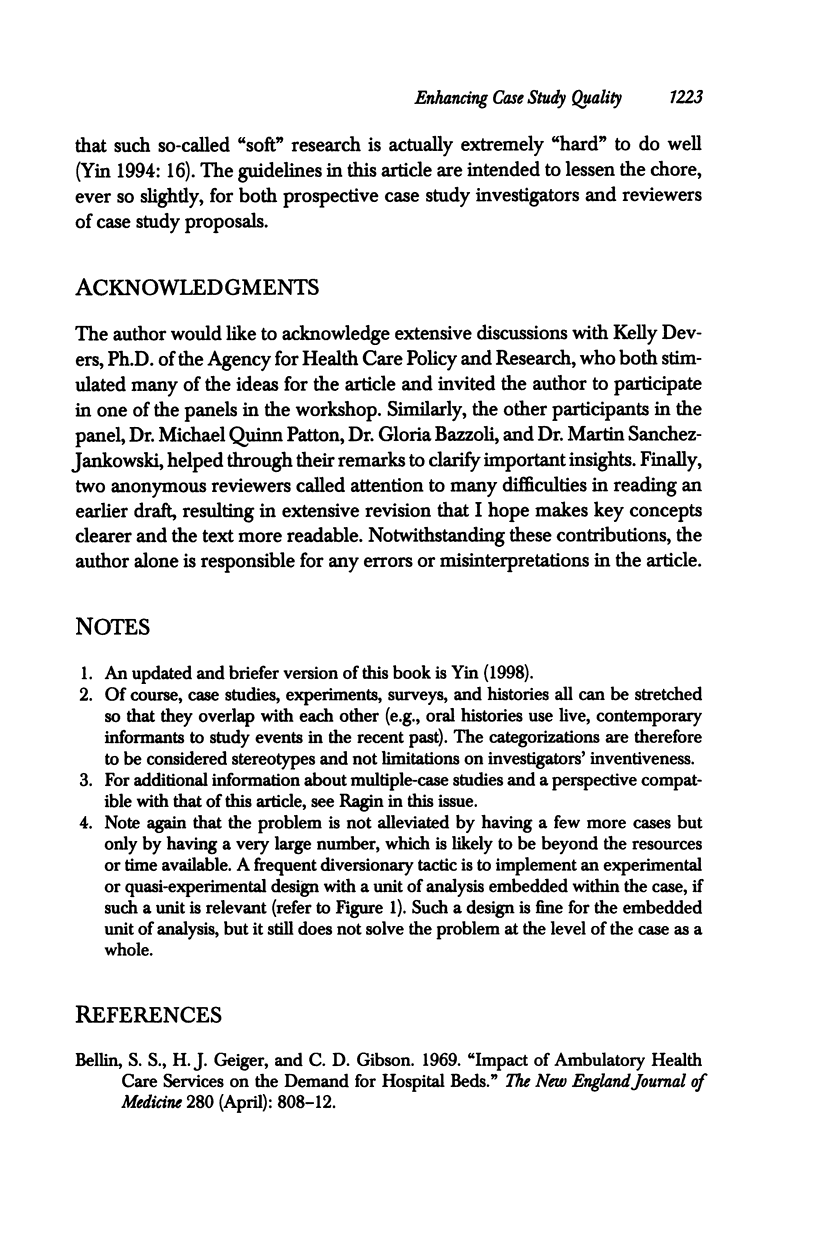
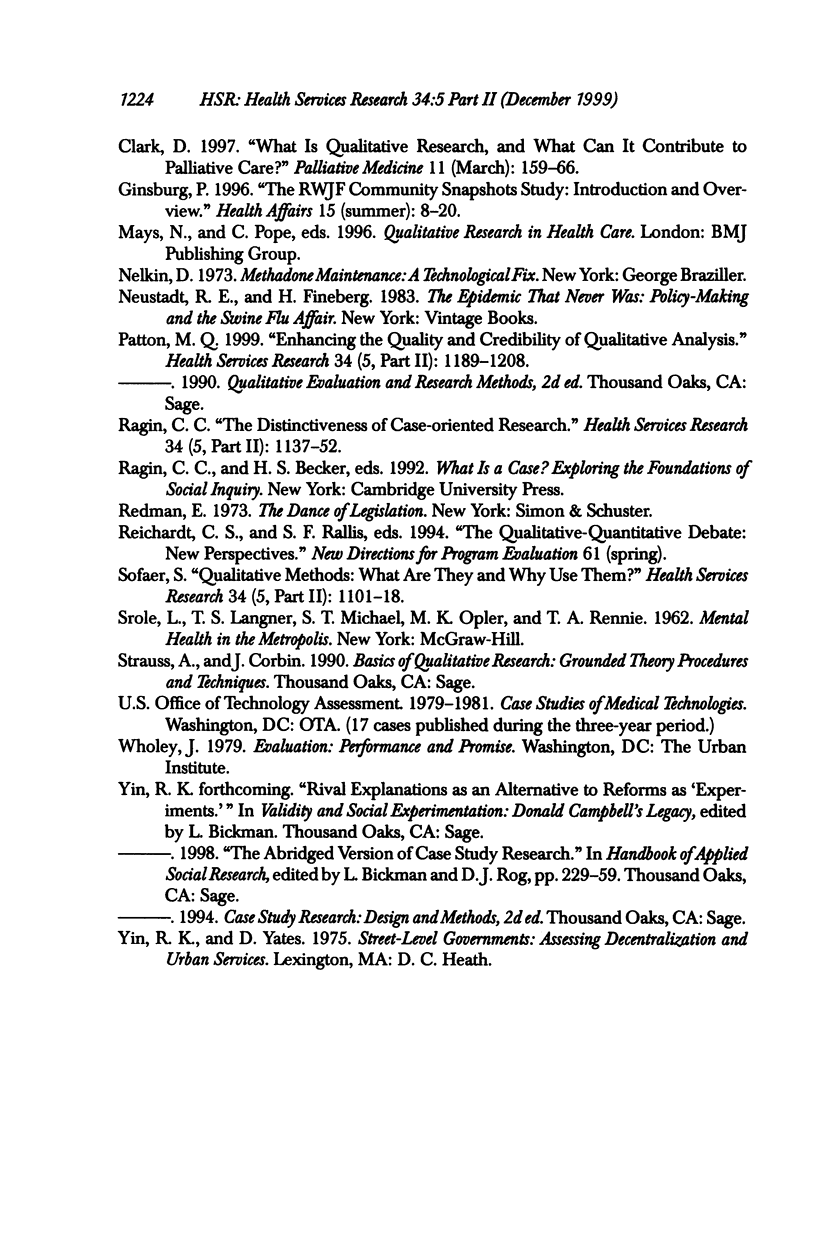
Images in this article
Selected References
These references are in PubMed. This may not be the complete list of references from this article.
- Bellin S. S., Geiger H. J., Gibson C. D. Impact of ambulatory-health-care services on the demand for hospital beds. N Engl J Med. 1969 Apr 10;280(15):808–812. doi: 10.1056/NEJM196904102801505. [DOI] [PubMed] [Google Scholar]
- Clark D. What is qualitative research and what can it contribute to palliative care? Palliat Med. 1997 Mar;11(2):159–166. doi: 10.1177/026921639701100211. [DOI] [PubMed] [Google Scholar]
- Ginsburg P. B. The RWJF Community Snapshots Study: introduction and overview. Health Aff (Millwood) 1996 Summer;15(2):7–20. doi: 10.1377/hlthaff.15.2.7. [DOI] [PubMed] [Google Scholar]
- Patton M. Q. Enhancing the quality and credibility of qualitative analysis. Health Serv Res. 1999 Dec;34(5 Pt 2):1189–1208. [PMC free article] [PubMed] [Google Scholar]
- Ragin C. C. The distinctiveness of case-oriented research. Health Serv Res. 1999 Dec;34(5 Pt 2):1137–1151. [PMC free article] [PubMed] [Google Scholar]
- Sofaer S. Qualitative methods: what are they and why use them? Health Serv Res. 1999 Dec;34(5 Pt 2):1101–1118. [PMC free article] [PubMed] [Google Scholar]



